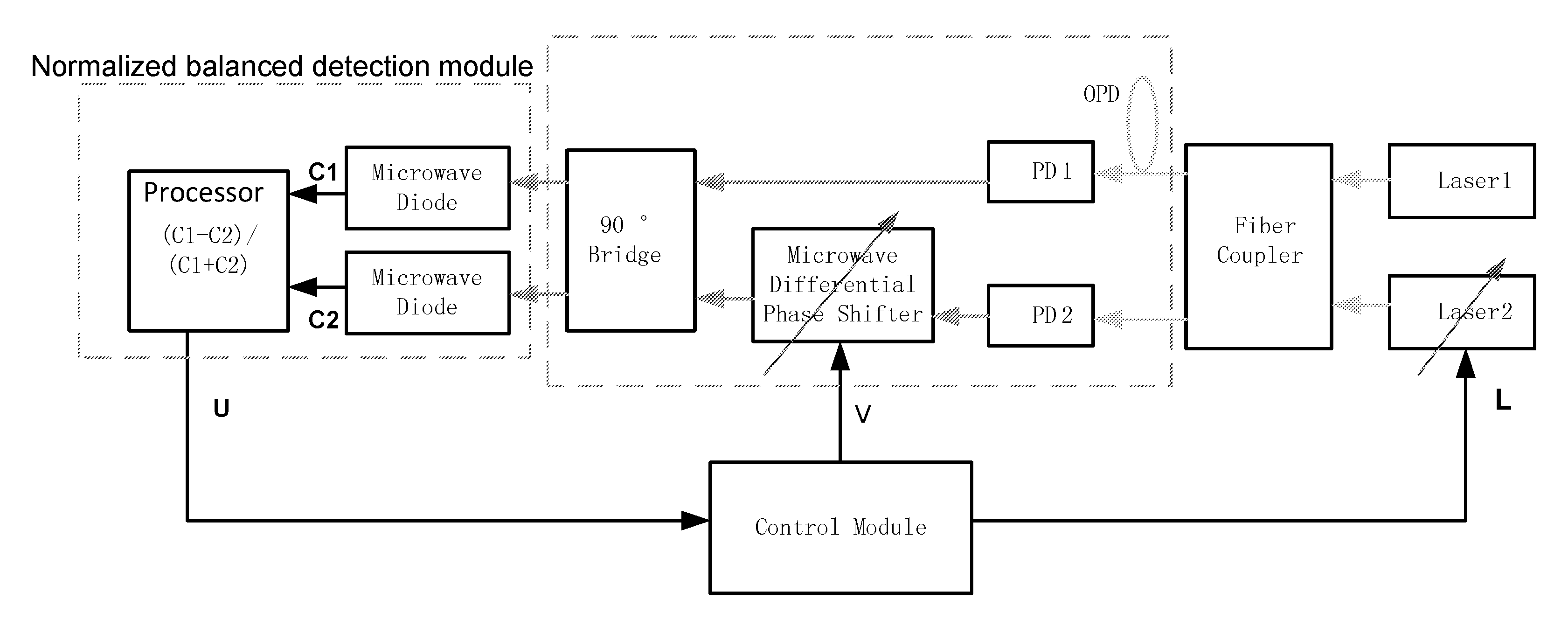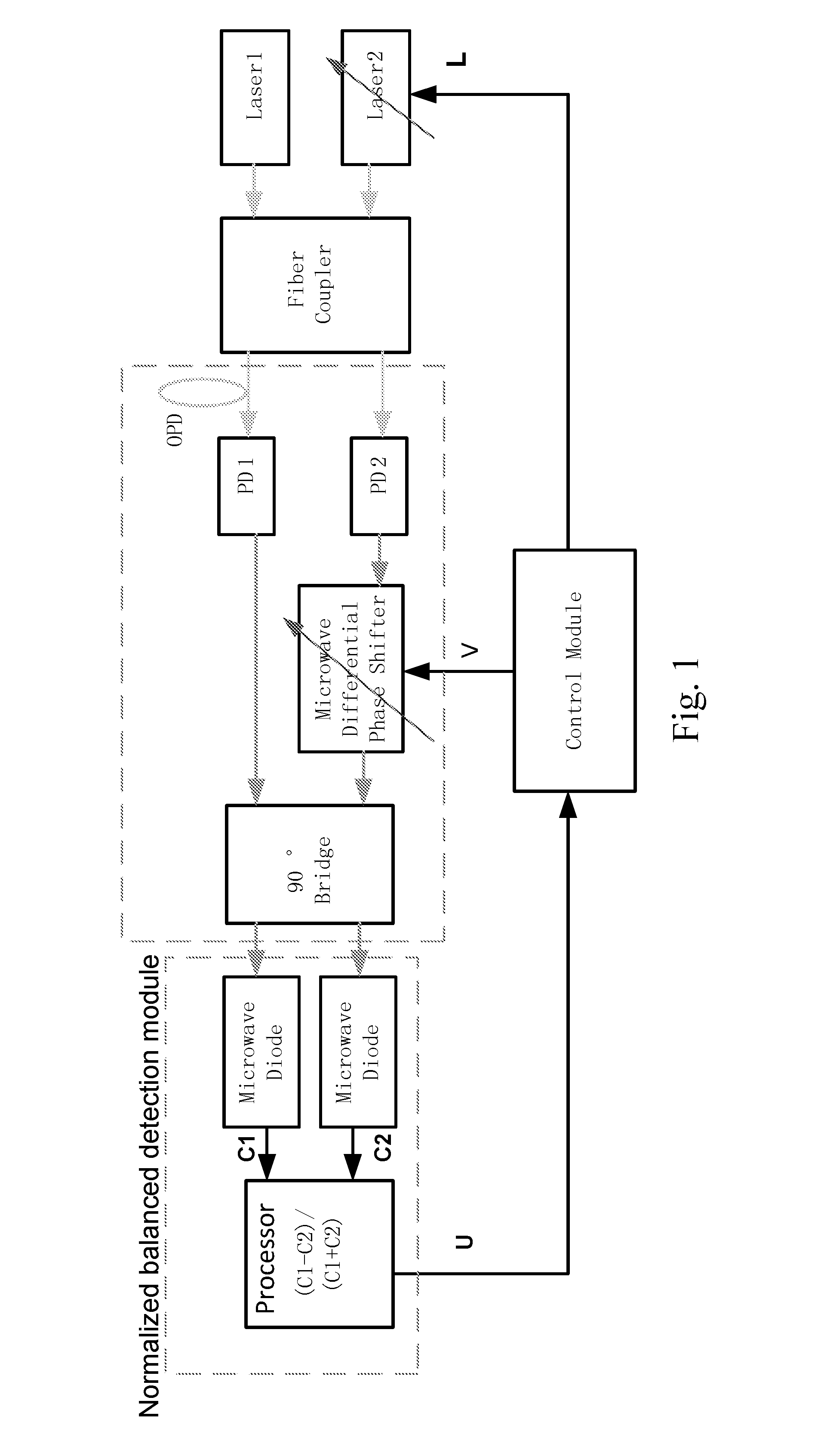Optic-microwave frequency discriminator for laser frequency difference locking, and method thereof
a technology of optical microwave frequency discrimination and laser frequency difference, which is applied in the direction of laser arrangements, laser details, electrical equipment, etc., can solve the problems of low speed and poor repeatability, fiber delay lines performing mechanical tuning, and the need for expensive rf source and other rf components to achieve high microwave frequency resolution
- Summary
- Abstract
- Description
- Claims
- Application Information
AI Technical Summary
Benefits of technology
Problems solved by technology
Method used
Image
Examples
Embodiment Construction
[0045]Referring to the drawings, the present invention is further illustrated.
[0046]Referring to FIG. 1, a fiber coupler combines two lasers and outputs two identical channels of mixed light from two lasers. According to the present invention, two high-speed photodiodes PD1 and PD2 convert the mixed light to two channels of microwave signals. A frequency of the microwave signal fB is a frequency difference of the two lasers. After passing a microwave phase shifter in one arm, two channels are combined by a 90° microwave bridge. In fact, 90° microwave bridge is similar to a Mach-Zehnda optic-microwave interferometer. Two output channels from the 90° microwave bridge are similar to two outputs of the interferometer. The phase difference between two channels is given by:
Φ(V):=2·π·OPDc·fB+θ(V)
[0047]wherein θ(V) is the phase shift introduced by the microwave phase shifter, OPD is an optical path difference between the first light signal and the second light signal, fB is a frequency diff...
PUM
 Login to View More
Login to View More Abstract
Description
Claims
Application Information
 Login to View More
Login to View More - R&D
- Intellectual Property
- Life Sciences
- Materials
- Tech Scout
- Unparalleled Data Quality
- Higher Quality Content
- 60% Fewer Hallucinations
Browse by: Latest US Patents, China's latest patents, Technical Efficacy Thesaurus, Application Domain, Technology Topic, Popular Technical Reports.
© 2025 PatSnap. All rights reserved.Legal|Privacy policy|Modern Slavery Act Transparency Statement|Sitemap|About US| Contact US: help@patsnap.com



